
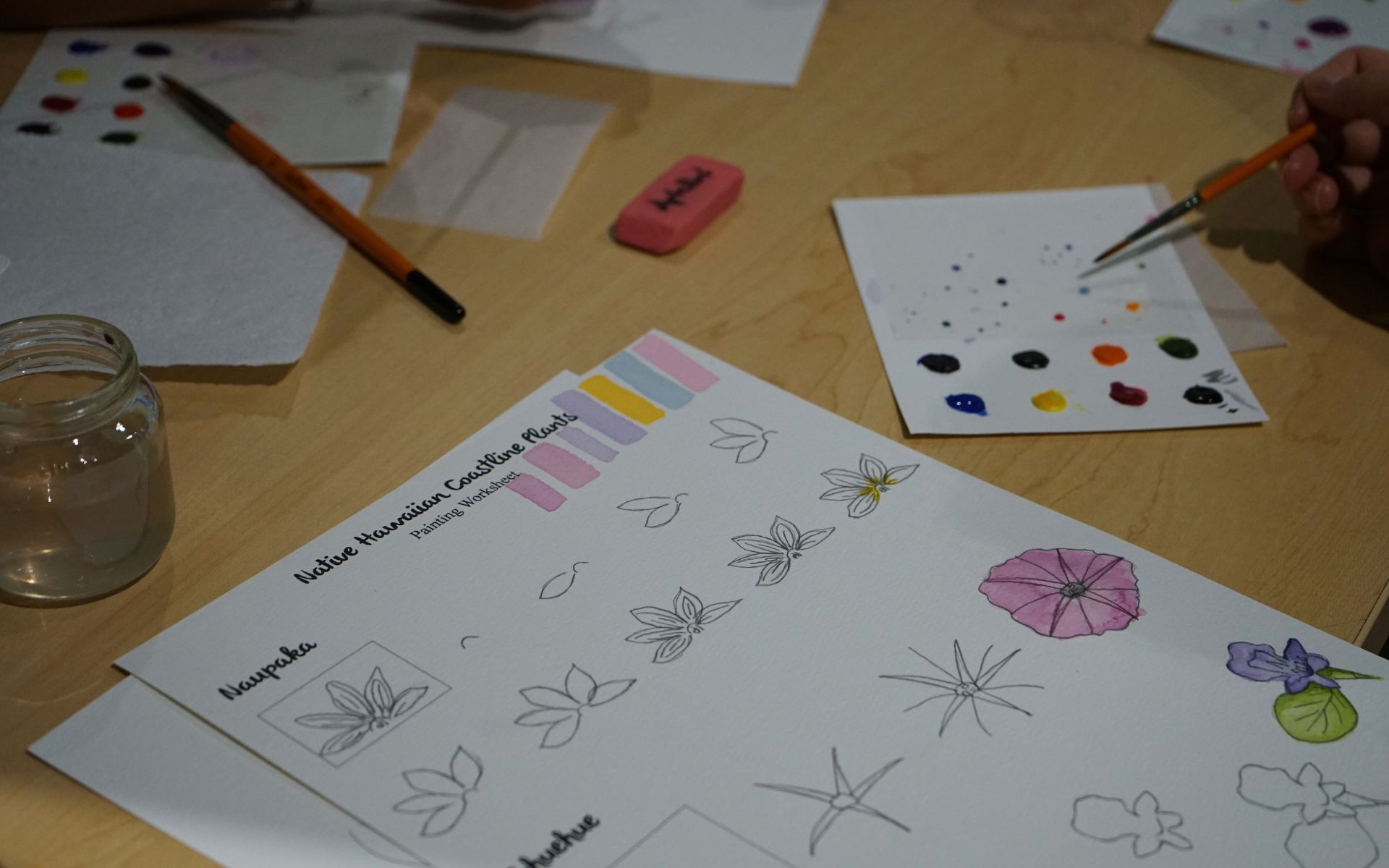
As part of our Island Earth series, Sustainable Coastlines Hawaiʻi joins forces with inspiring creatives, community voices, and change makers to offer free events open to the public where we get to learn more about sustainability, ʻāina, and Hawaiʻi together.
This September, SCH was SCHtoked to partner with artist Emily States of Kaulumaika to hold an Island Earth: Paint + Sip workshop! The theme of this Paint + Sip was native coastal plants that featured naupaka kahakai, pōhuehue, and pōhinahina; plants that we continue to grow our relationship with as we care for Hawaiʻi’s coastlines.
We hope this interview with Emily States of Kaulumaika inspires you to find your creativity and connections to nature in all that you do.
ʻŌlelo Hawaiʻi (Hawaiian language) in this interview:
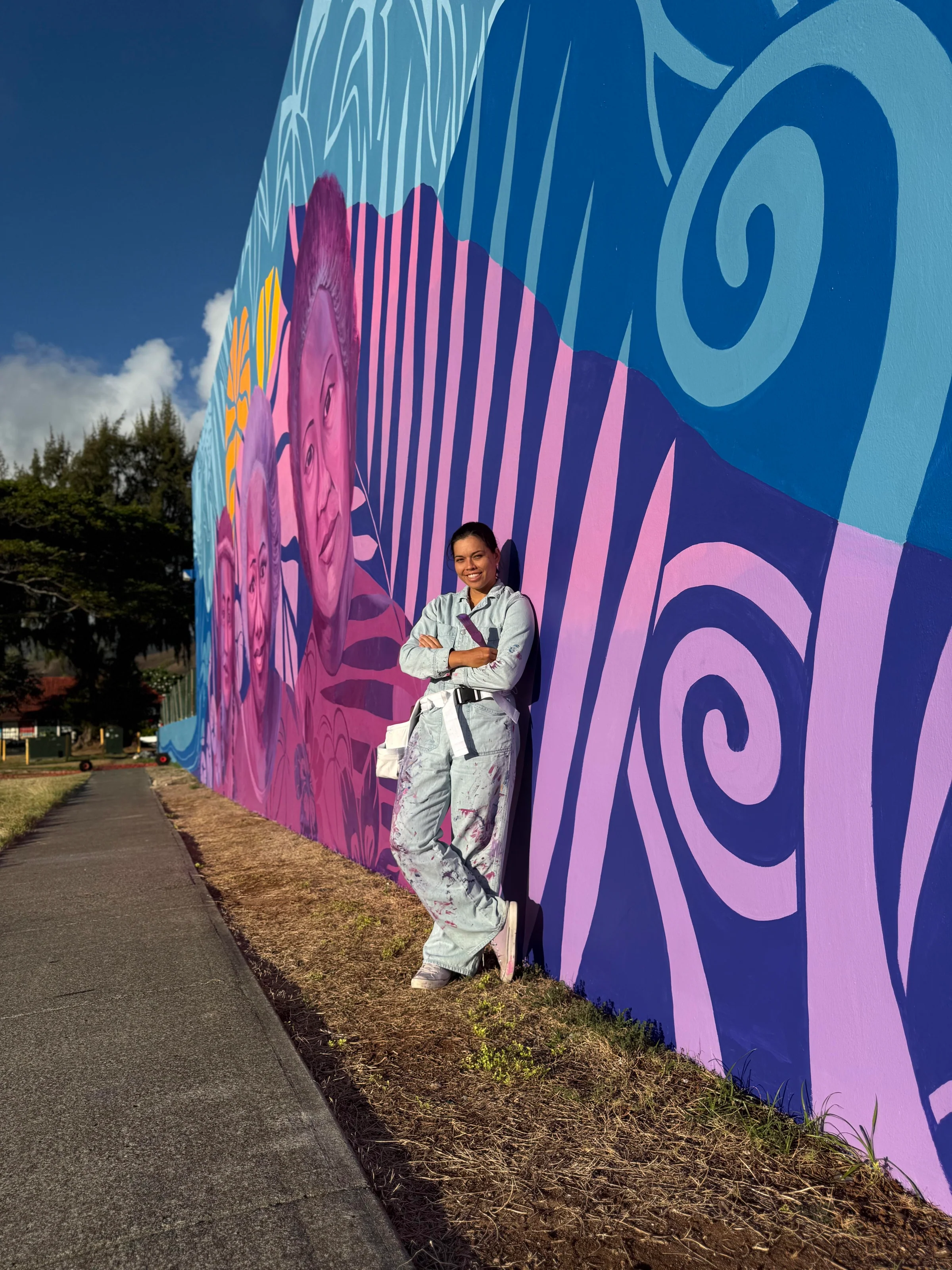
“As a Native Hawaiian born and raised in Kailua, I asked myself as an adult why I didn't know much about my Hawaiian heritage, language or culture. This question started me and my husband on a journey back in 2016 to learn Hawaiian so that in 9 months time we could speak Hawaiian to our newborn and firstborn child. I shared about what I was learning on social media through the medium of art. I started building a community of people who, like me, wanted to connect more to their Hawaiian Heritage and heal from the generational trauma of the illegal overthrow of the Hawaiian kingdom in 1893. It was because of this community and my family that Kaulumaika was born.” - Emily States, Kaulumaika

“This is a tough question because it's all so fun for me. I think it would have to be watercolor because it's what I started with and till this day it holds a magic for me. I think it's the water itself. In Hawaiian the word for wealth is, "waiwai" and the word for water is "wai". It can be inferred from this that Hawaiians viewed water and the abundance of it as true wealth. When I paint with watercolor I feel that connection to "wai". There are things you can control with it, but also so much that it does on its own and that space for the unexpected leads to a lot of beauty in my opinion. It's a medium that keeps flowing even after you lay down your brush stroke.” - ES
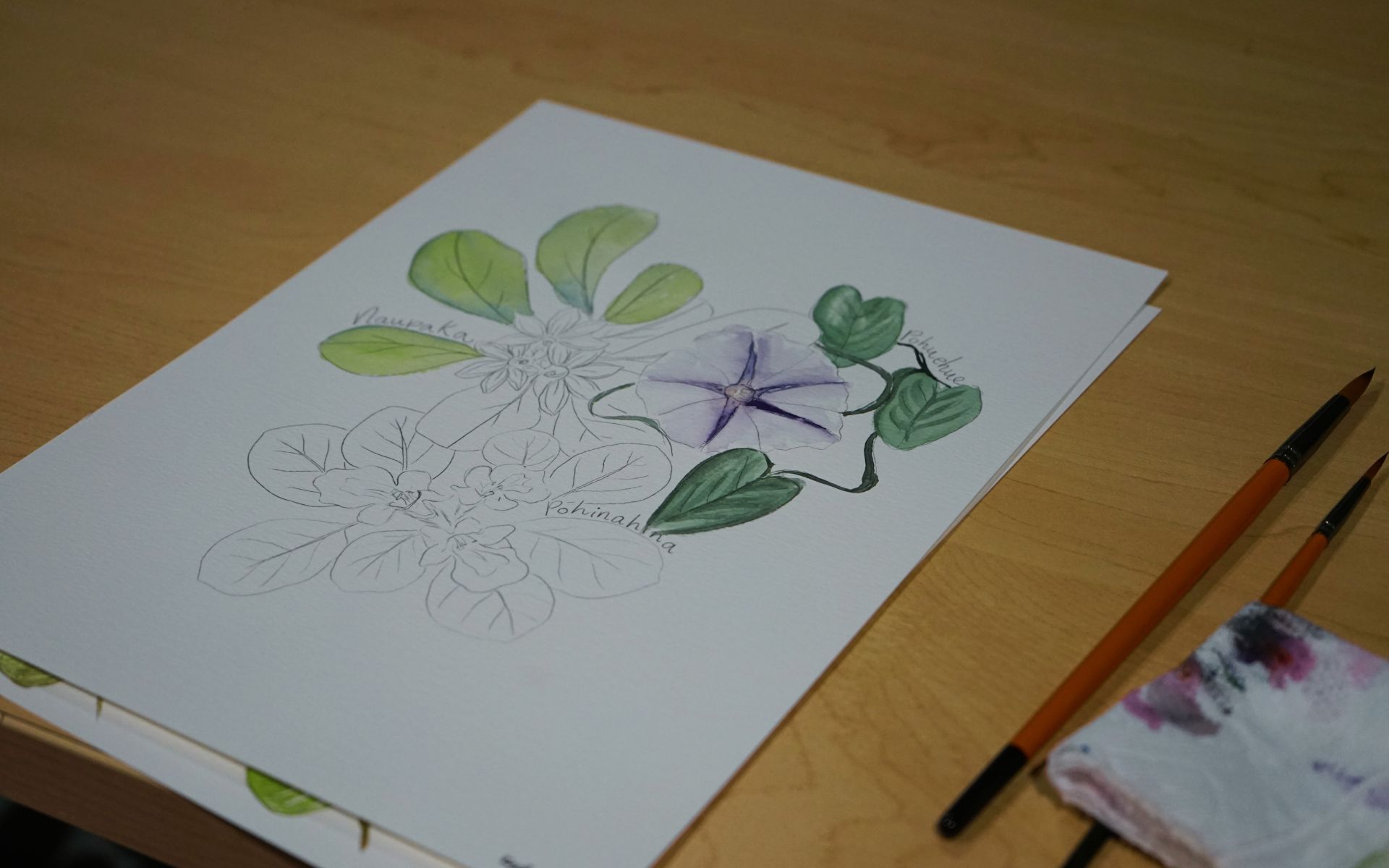
“My favorite native coastal plant would be hala. My great grandmother, the last native Hawaiian speaker in my family's lineage was a master lauhala weaver. When I see hala I think of her and her legacy of creativity and craftsmanship that she passed on to me and others in the community.” - ES
“My husband works at a loi so sometimes we go to work with him. Something that stands out to me when we are there is the significance of seeing the Native Hawaiian birds there. The aeo, alae ula, aukuu, and possibly the koloa although I'm only guessing that it might be the koloa as I'm not as used to identifying that one. Seeing these birds signifies the health of the land and that all the harmful things humans have done to it over the years are being reversed. That symbol gives me a lot of hope.” - ES
“Art has the power to raise awareness about anything and everything. A paintbrush or pencil in the hands of a passionate artist can be the catalyst for change and action. An artist that can make a viewer feel a certain way through their medium is a formidable force.” - ES
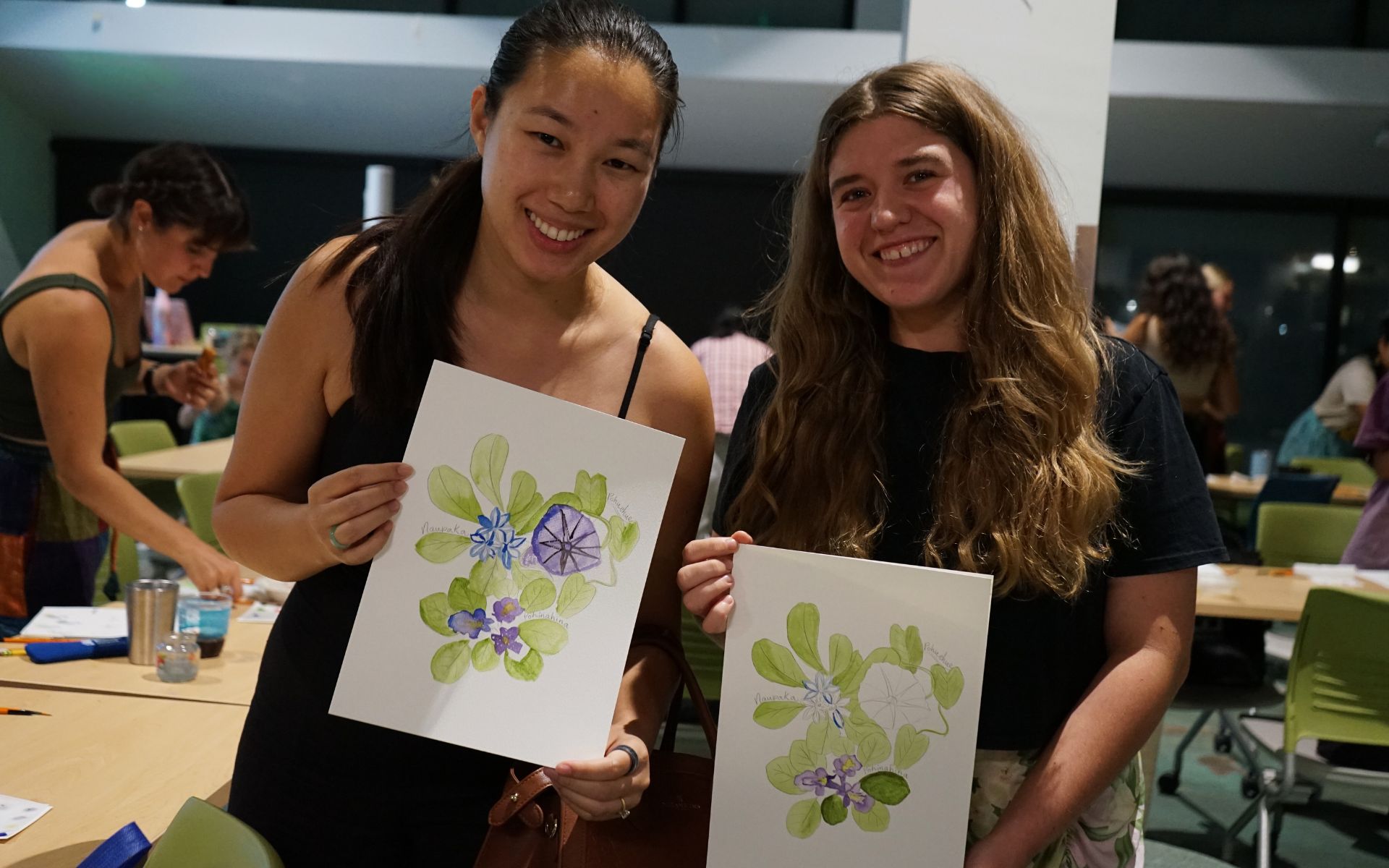
“Bringing people together in a space that is welcoming and focused on education creates opportunities for real conversation and connection. Creating brings out the best in humans as it forces us to use the spiritual and divine parts of our nature. Creativity combined with community leads to change.” - ES
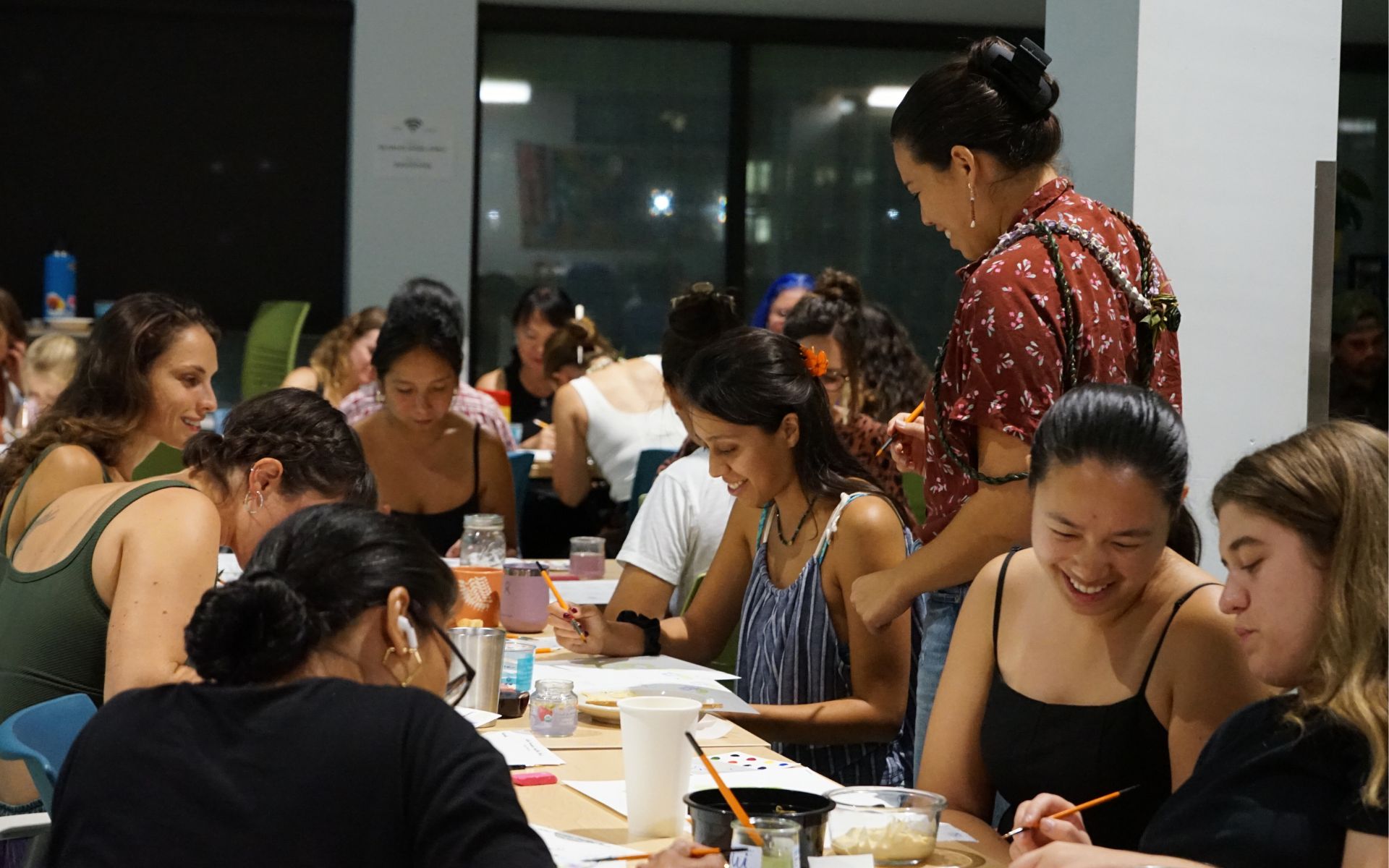
Mahalo nui to Emily and our incredible Paint + Sip participants for creating with us, Purple Maiʻa for hosting our event at Hālau ʻĪnana in Mōʻiliʻili, and Shaloha for their generous donation of food for the evening.
About Island Earth:
Island Earth sessions are talks, workshops, workdays, and other non-conventional learning events open to the public where we get to learn more about sustainability, ʻāina, and Hawaiʻi together. These sessions aim to build community and curiosity through life-long learning, highlight exciting and important topics and solutions in sustainability, and provide opportunities to become more rooted in the community and place of Hawaiʻi. Island Earth events are designed to help us all (re)learn how to live in deeper relationship with the lands, waters, and people of these islands, and this island earth, together. Our islands teach us that we must live within the limits of our natural resources, yet when we learn to do so in a pono way collectively, so much abundance is possible!
Don’t miss your chance to attend our next FREE island earth event - subscribe to our newsletter for the latest updates or consider becoming a SCHmember and get notified first about upcoming events and SCHmember exclusive perks!
Want to Volunteer with us?:
Visit our SCHedule to learn more about our upcoming coastal clean-ups and ʻāina work days.